
WHAT IS SOUS VIDE COOKING?: METHODS AND STEPS FOR SOUS VIDE
Sous vide, meaning “under vacuum” in French, is a cooking technique where food is sealed in an airtight bag and gently heated in a water bath. The method uses precise temperature control to cook ingredients evenly, ensuring they reach the ideal level of doneness.
The result is often tender, juicy dishes like melt-in-your-mouth steak or richly flavored pork tenderloin.
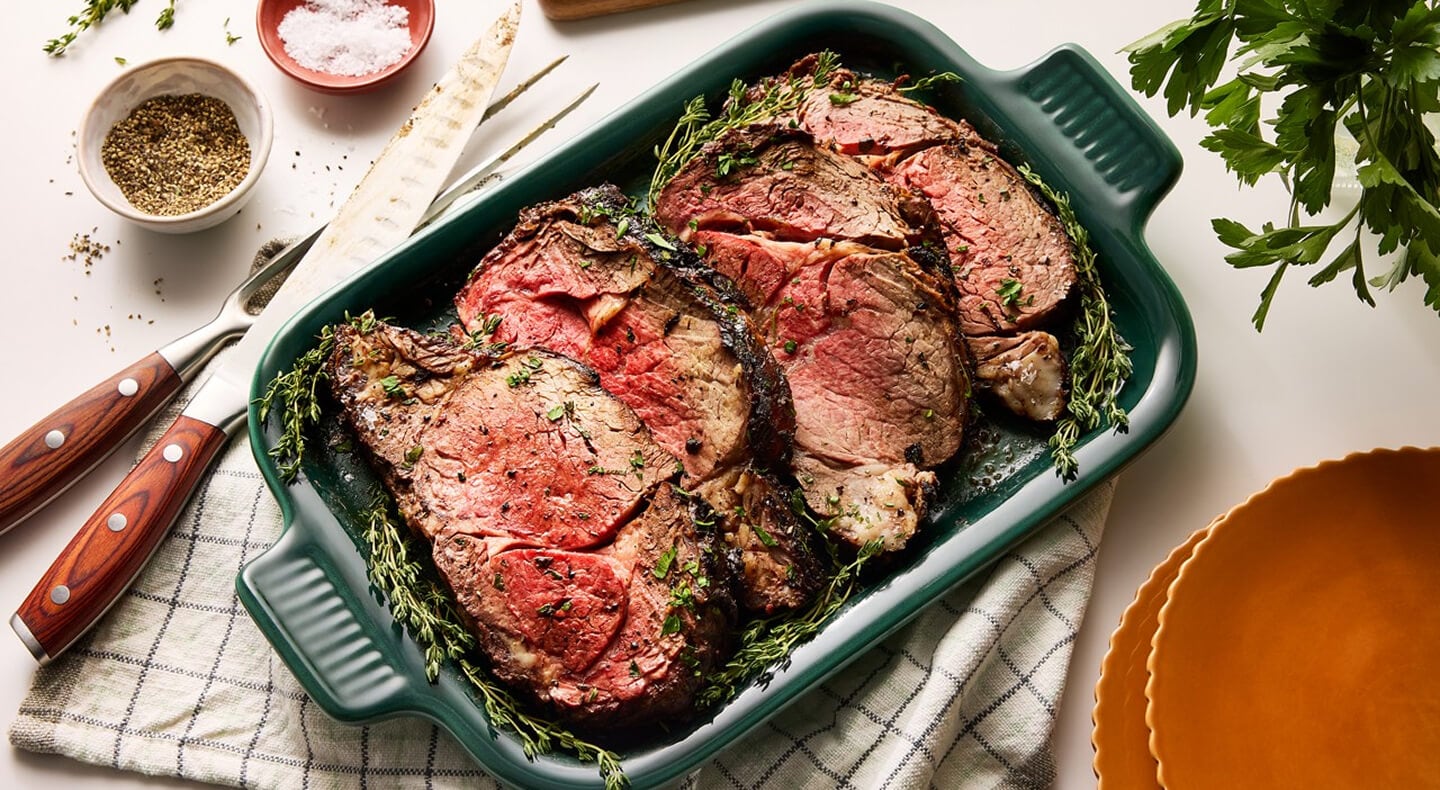
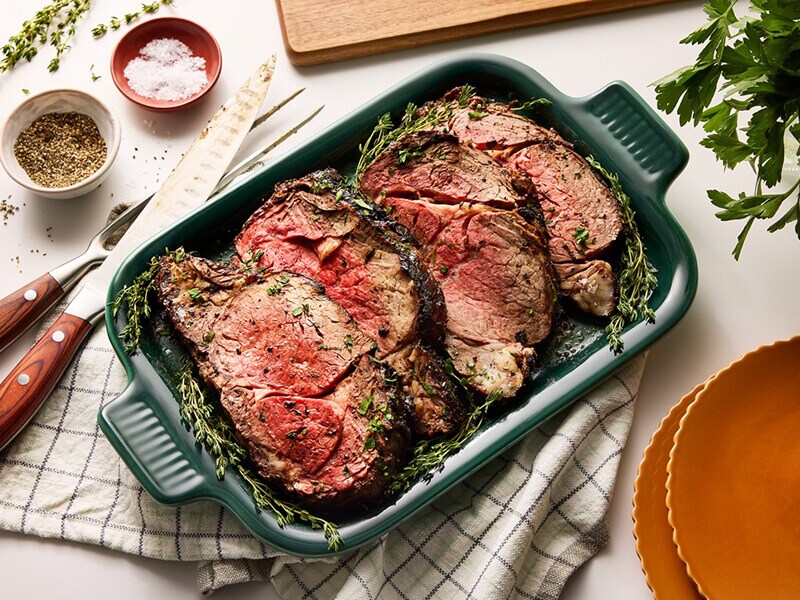
WHAT IS SOUS VIDE?
Sous vide is a French cooking technique where food is sealed in an airtight, vacuum-sealed bag and gently cooked in a hot water bath. Typically, a circulator tool is used to heat and circulate the water evenly, though the method can also be done on the stovetop using a digital thermometer to monitor the temperature of the water bath.
For sous vide cooking, the basic steps include seasoning your protein with salt or spices, slipping it into a food-grade vacuum-sealed bag or freezer bag, removing as much air as possible, setting your time and temperature to accommodate what you’re cooking, and dropping your bag into heated water to cook its contents.
SOUS VIDE ADVANTAGES
Sous vide allows for highly controlled cooking, helping you heat ingredients to exactly the right temperature, which is ideal for keeping meats tender. Some of its other benefits may include:
Consistent, precise results
Enhanced flavor and texture
- Better moisture retention
BEST FOODS TO COOK WITH SOUS VIDE
Sous vide is a flexible technique suitable for cooking a range of foods, from beef and lamb, to more delicate foods, such as eggs or vegetables. It can also be used to elevate everyday meals into restaurant-quality dishes, like tender lamb chops for dinner, or eggs Benedict for breakfast.
Other foods that often work well for sous vide include:
Carrots
Corn on the cob
Bacon
Pork shoulder
Lobster
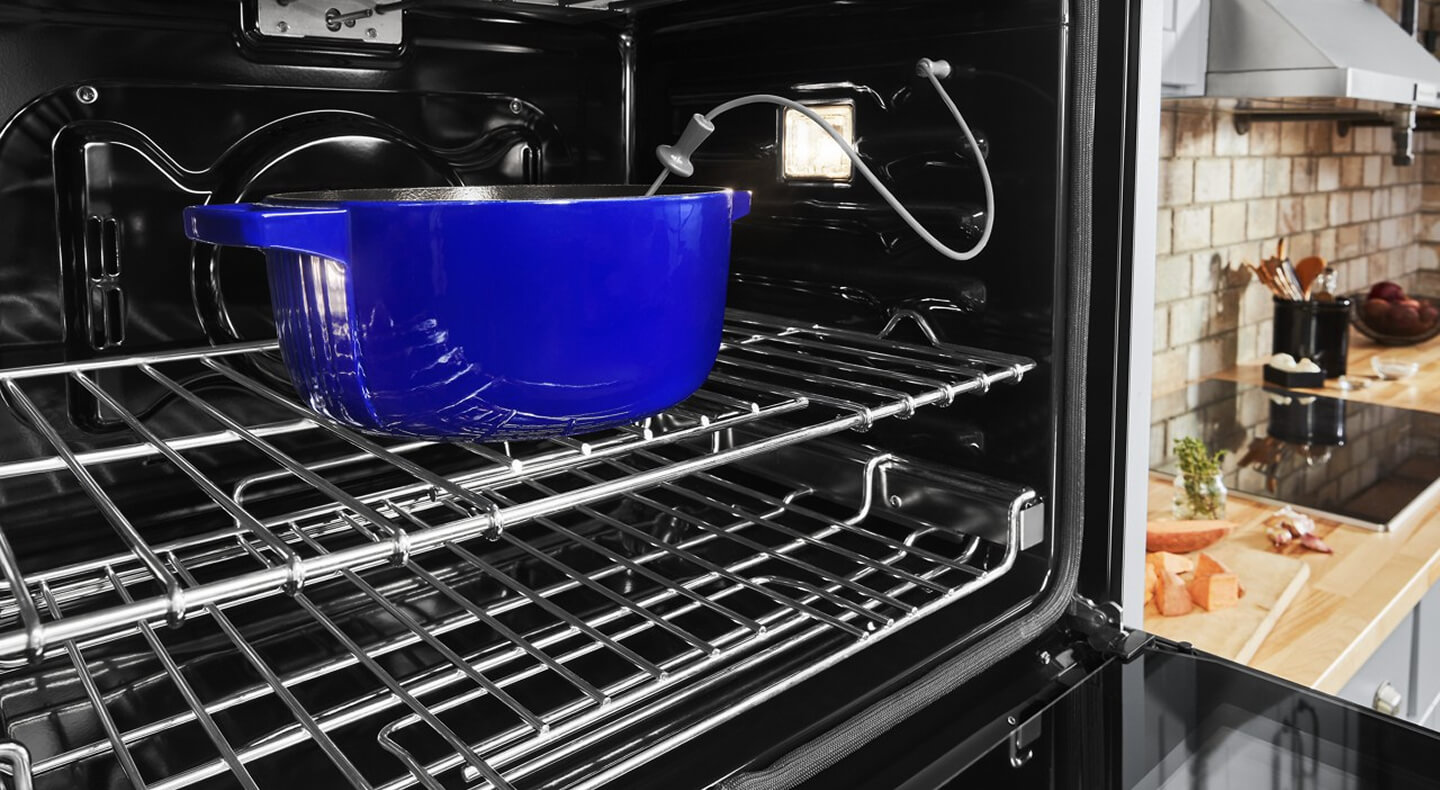
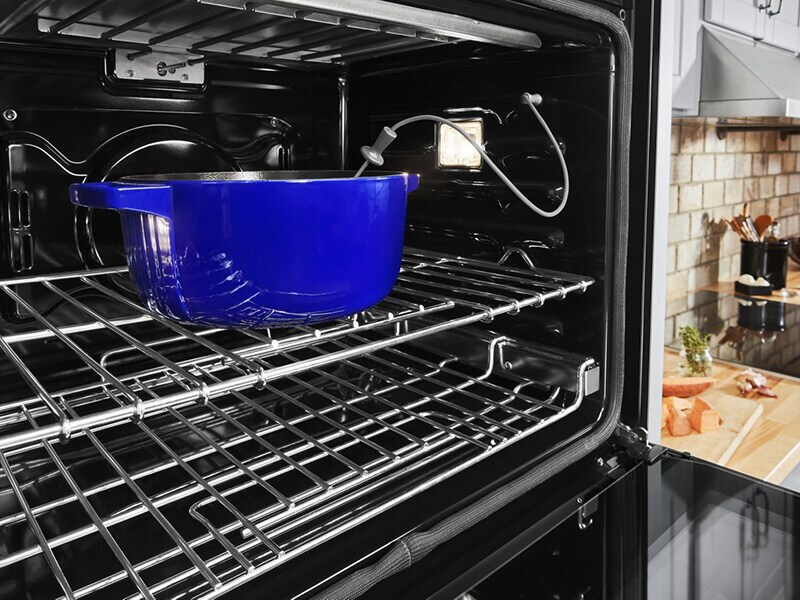
WHAT IS BAGLESS SOUS VIDE?
Traditional sous vide uses a sealed bag and water bath to cook food slowly at a precise temperature. Bagless, or air sous vide, recreates the method in your oven using steady low heat and airflow to gently and evenly cook food—no bags or water needed.
BAGLESS SOUS VIDE VS. TRADITIONAL SOUS VIDE: WHAT’S THE DIFFERENCE?
Conventional sous vide relies on vacuum-sealed bags and a heated water bath, whereas bagless sous vide achieves similar slow cooking by circulating low, consistent heat within your oven without bags or water.
CAN YOU SOUS VIDE IN AN OVEN?
Yes—some ovens now offer an Air Sous Vide mode, which mimics traditional sous vide by using low, controlled heat and airflow to help cook food gently and evenly, no water or bags needed. Be sure to follow your owner’s manual or recipe for specific time and temperature directions for the dish you’re cooking.
SHOP KITCHENAID® WALL OVENS
KitchenAid brand offers select single, double and combination wall ovens crafted with advanced features, such as a Smart Oven+ Steamer Attachment. It fits interchangeably onto the base pan and heating element and connects to a powered hub in your oven, enabling control through the oven's display so you can precisely steam-cook vegetables, entrees or even a complete dinner for four.
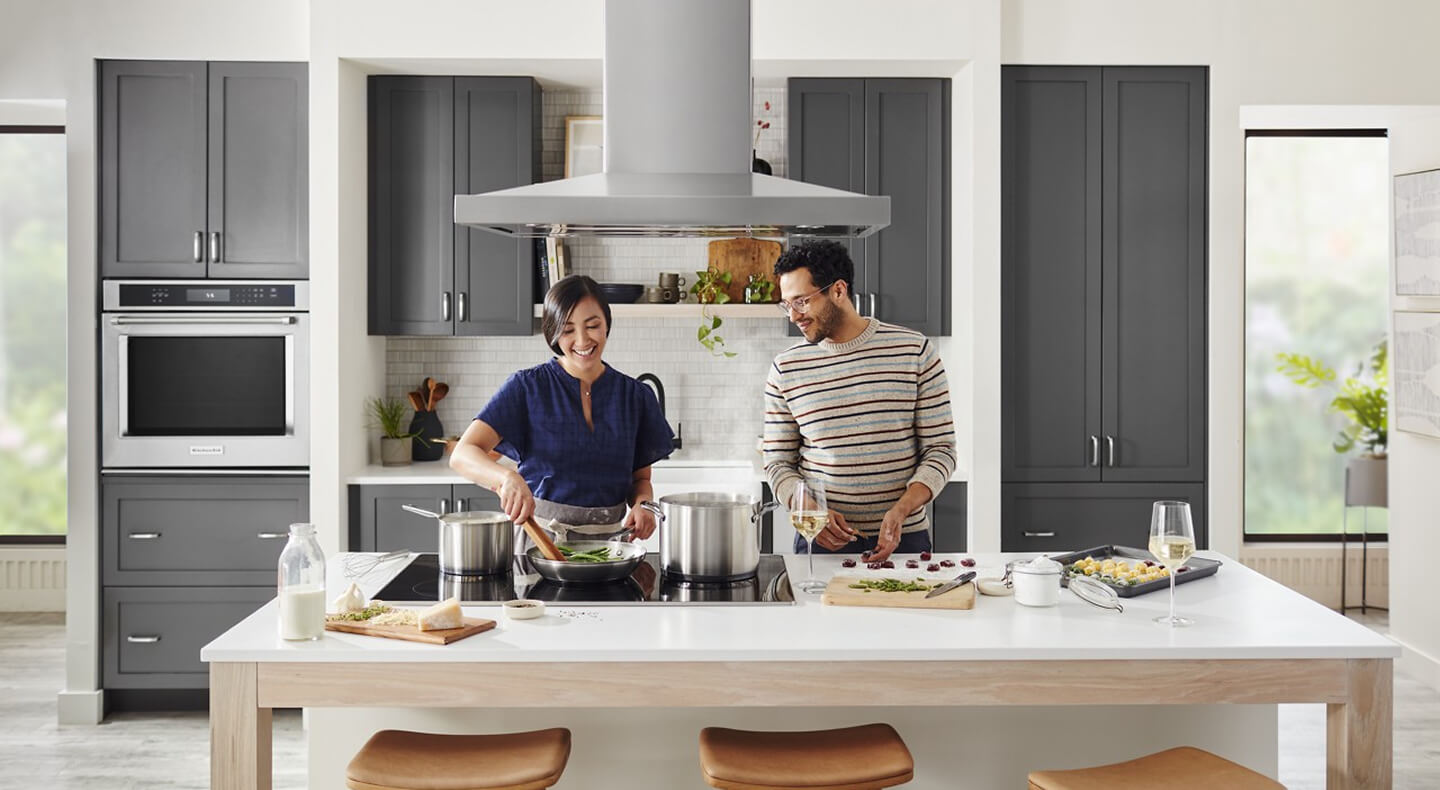
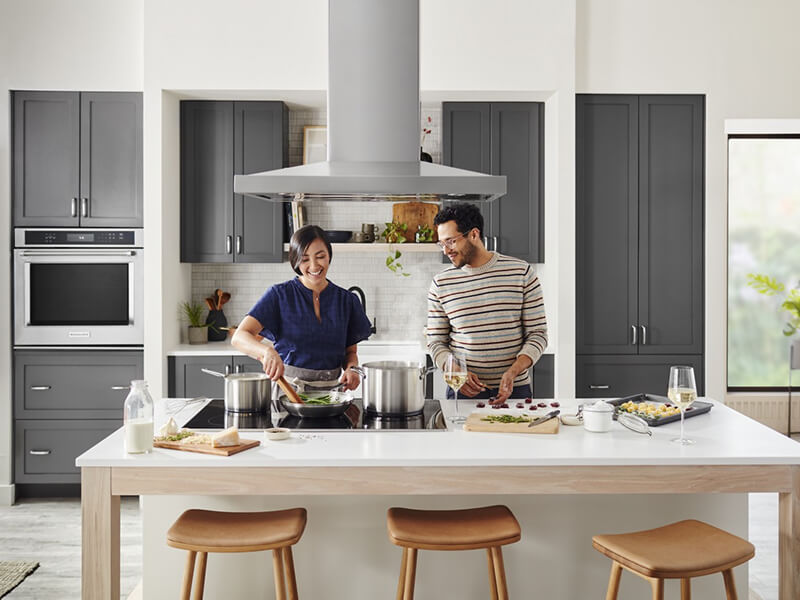
SOUS VIDE COOKING: A STEP-BY-STEP GUIDE
From supplies to seasoning, here’s everything you need to get started with sous vide cooking techniques in your own kitchen.
SUPPLIES
A protein (meat or seafood, for example)
Salt and/or spices
Water
Sealable plastic bags
TOOLS
Immersion circulator
- Large container or pot (water bath)
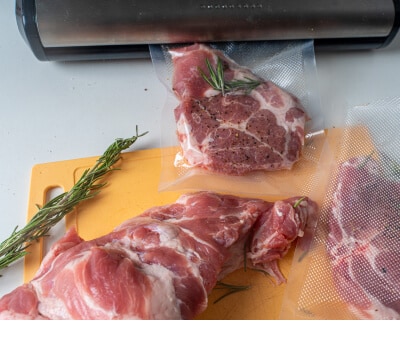
1. SEASON YOUR PROTEIN
Start by generously seasoning your protein with kosher salt and any spices or pastes you like—think black pepper, chile powder, curry or harissa. Sous vide cooking helps lock those flavors in, giving them time to infuse deeply for bold, concentrated taste. Add aromatics like rosemary, thyme, bay leaves or dried chiles, pressing them against the protein. A small amount of butter, ghee or coconut oil adds richness—just avoid too much liquid, which can affect sealing.
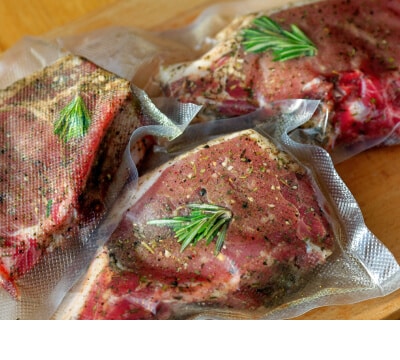
2. SLIP INGREDIENTS IN BAG
After seasoning, place your protein in a vacuum-sealed bag or sturdy freezer bag.
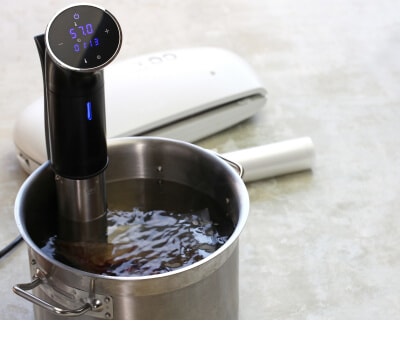
3. PREPARE WATER BATH
Fill a large pot with enough water to fully submerge your food. Place water on the stovetop to preheat it. After the water is preheated, remove the pot from the stove and attach your immersion circulator, which will heat the water to the exact temperature your recipe calls for and keep the water moving. Be sure to follow the water level guidelines from your circulator's manufacturer before attaching it to the pot. As for what temperature to aim for, unlike traditional cooking methods, sous vide heats food to the exact temperature you want it to finish, typically between 120°F (48.9°C) and 185°F (85°C), depending on the type of dish. Your specific recipe should tell you what temperature to cook your dish at and for how long.
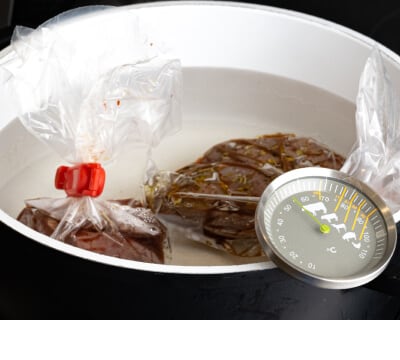
4. SOUS VIDE COOK ON A COOKTOP
If you're using a cooktop setup, adjust the burner as needed—especially when you first add food—to keep water at a steady temperature for even results.
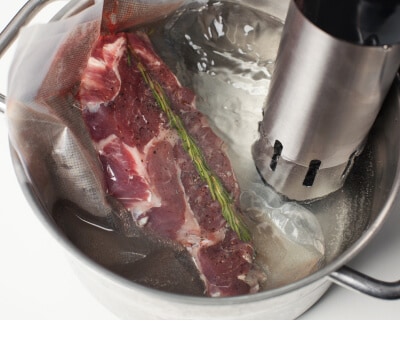
5. SOUS VIDE COOK YOUR PROTEIN
Once your protein reaches the target temperature recommended by your recipe, let it rest in the bag for 15-20 minutes to absorb the seasoned juices. Some proteins—like chicken breast or salmon—can be served straight from the bag. Others, like steak or pork belly, benefit from a final sear, grill or quick boil to develop a crisp, flavorful crust. Just remove the protein, pat it dry and finish it over high heat for a minute or two per side.
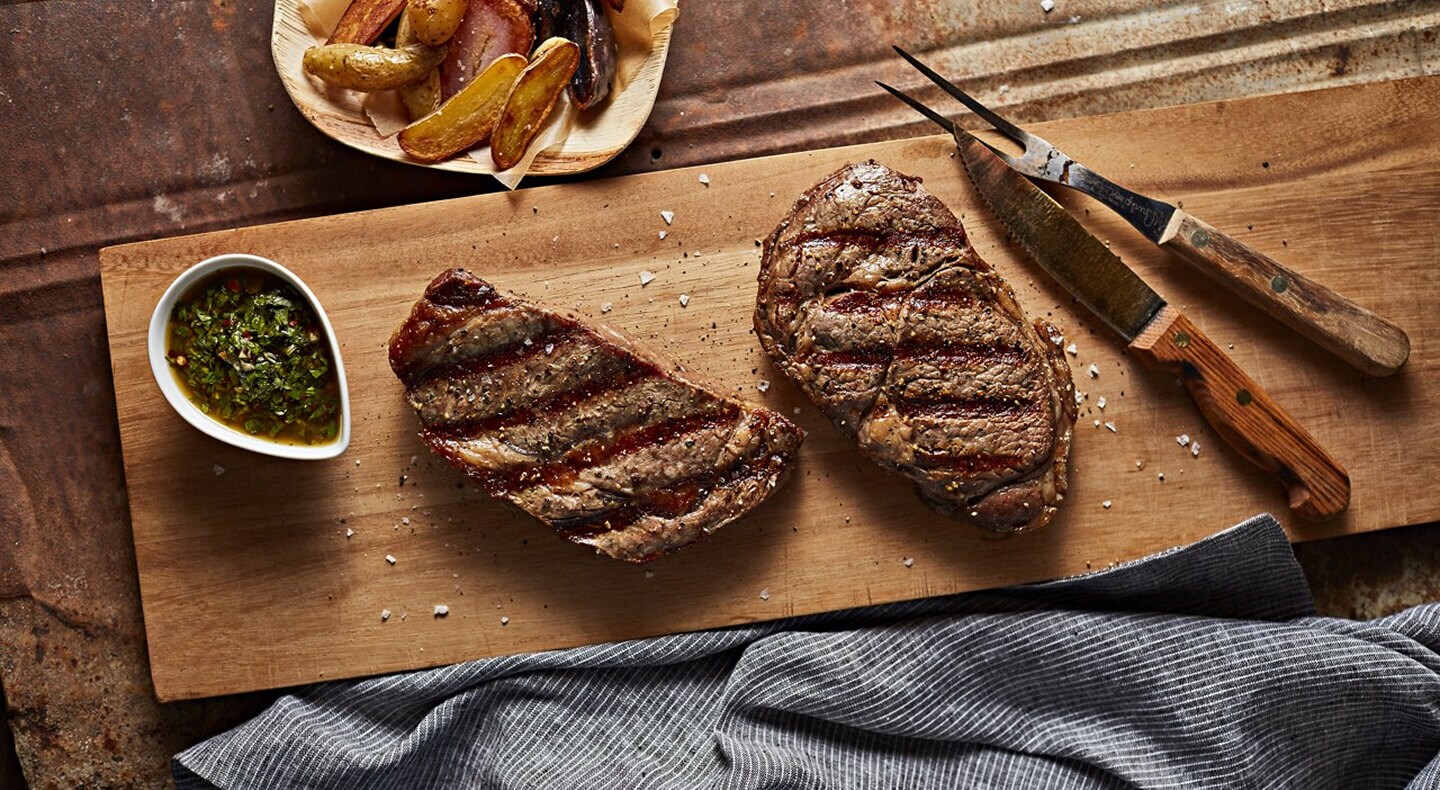
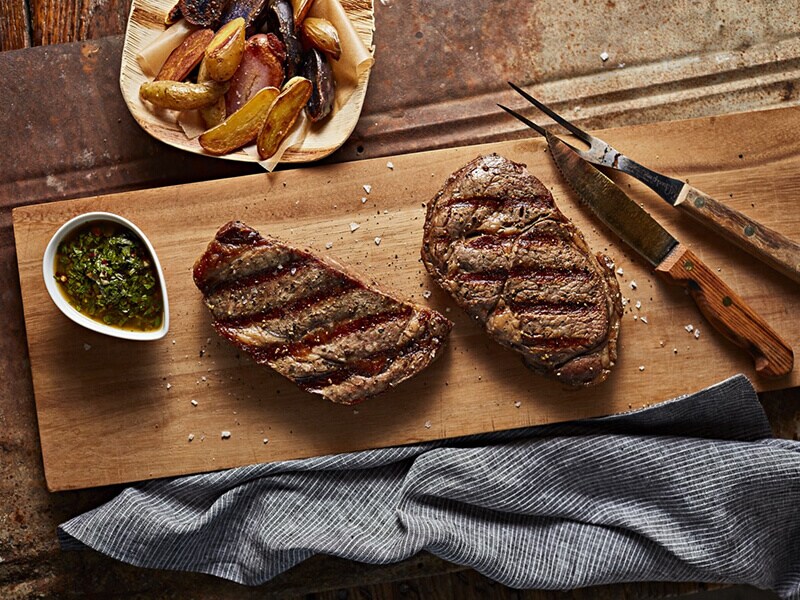
SOUS VIDE TIPS
The sous vide cooking technique is all about precision and consistency. These tips can help you become comfortable with the method and start making the most of it in your own kitchen.
Choose sturdy bags: While zip-top bags work in a pinch, go for high-quality, food-safe plastic that can hold up to long cook times without leaking or breaking down in hot water. If you get serious about sous vide cooking, you may want to purchase a vacuum sealer and corresponding food-safe bags.
Leave room to cook: Avoid filling your pot to the brim. Make sure there’s enough space for your ingredients to move freely and stay fully submerged without causing overflow.
Keep an eye on temp: Temperature control is key to sous vide. Use a reliable thermometer or immersion circulator to monitor water temp and maintain a stable environment throughout cooking.
Finish with a sear: For proteins like steak or pork, a quick sear after the water bath can add a flavorful crust and better texture. Just a minute or two on high heat can do the trick.
Set a timer: Use your phone or a kitchen timer to track cooking time. Precision is part of what makes sous vide great, so stick to your recipe’s recommended duration for each food.
- Secure the bag: Keep the bag from floating or shifting while cooking by clipping it to the pot’s side. A clothespin or binder clip can help keep everything in place.
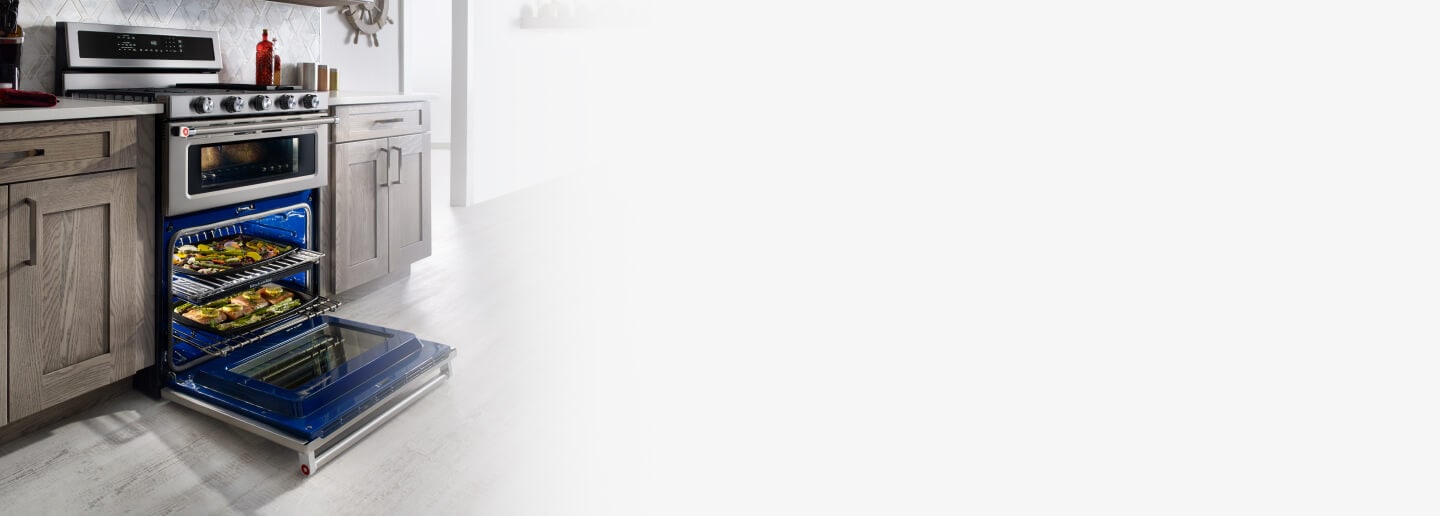
KitchenAid® Double Oven Ranges
Get the most out of your making
Whether you’re cooking multiple course meals or testing new recipes, KitchenAid® double oven ranges offer flexible cooking capacity to nurture your creativity
